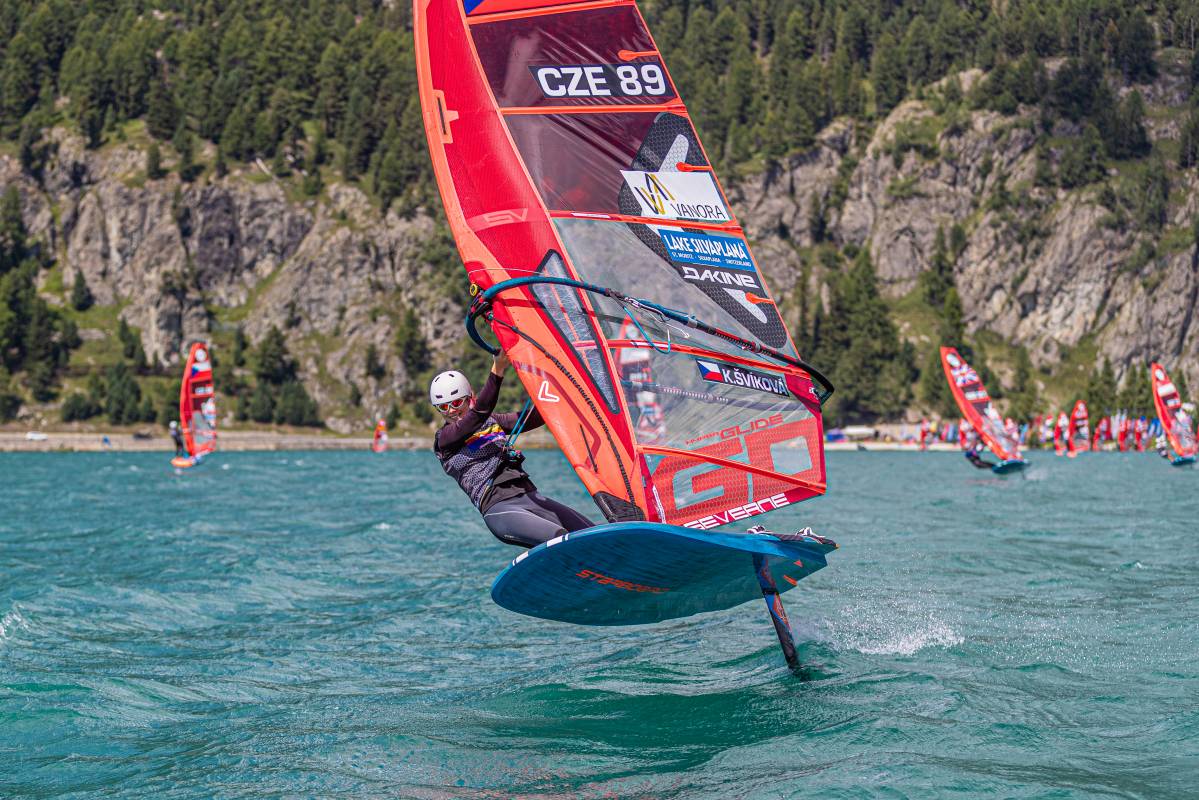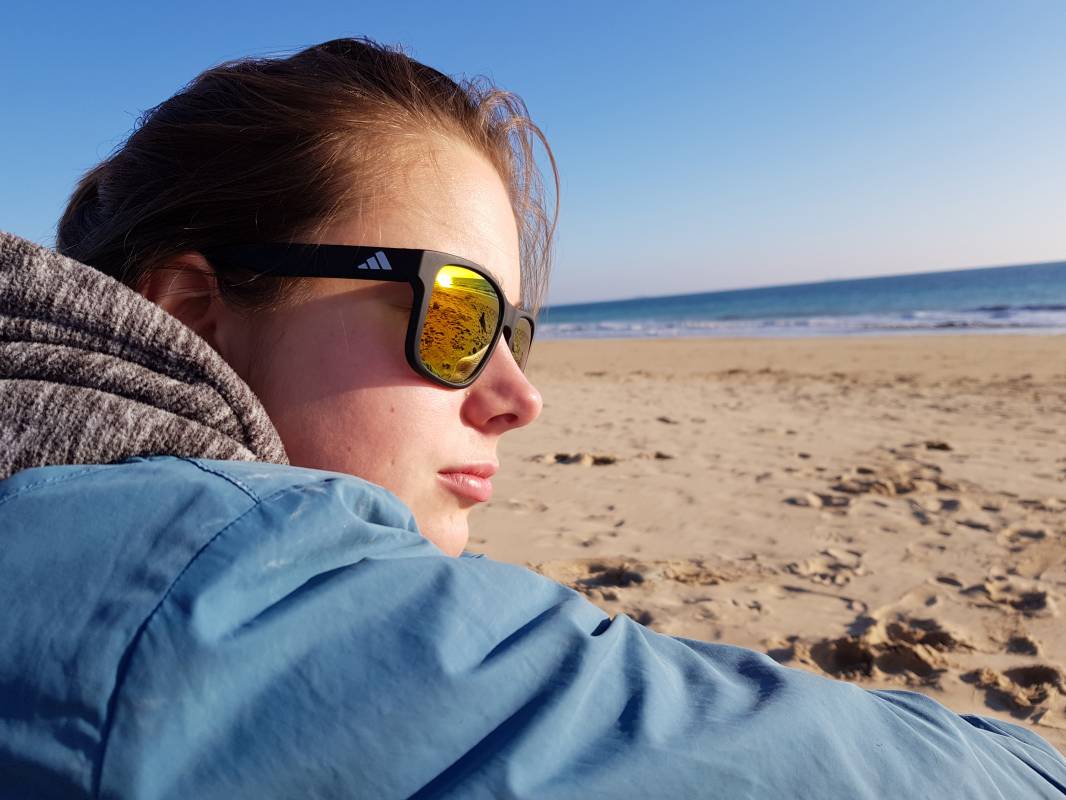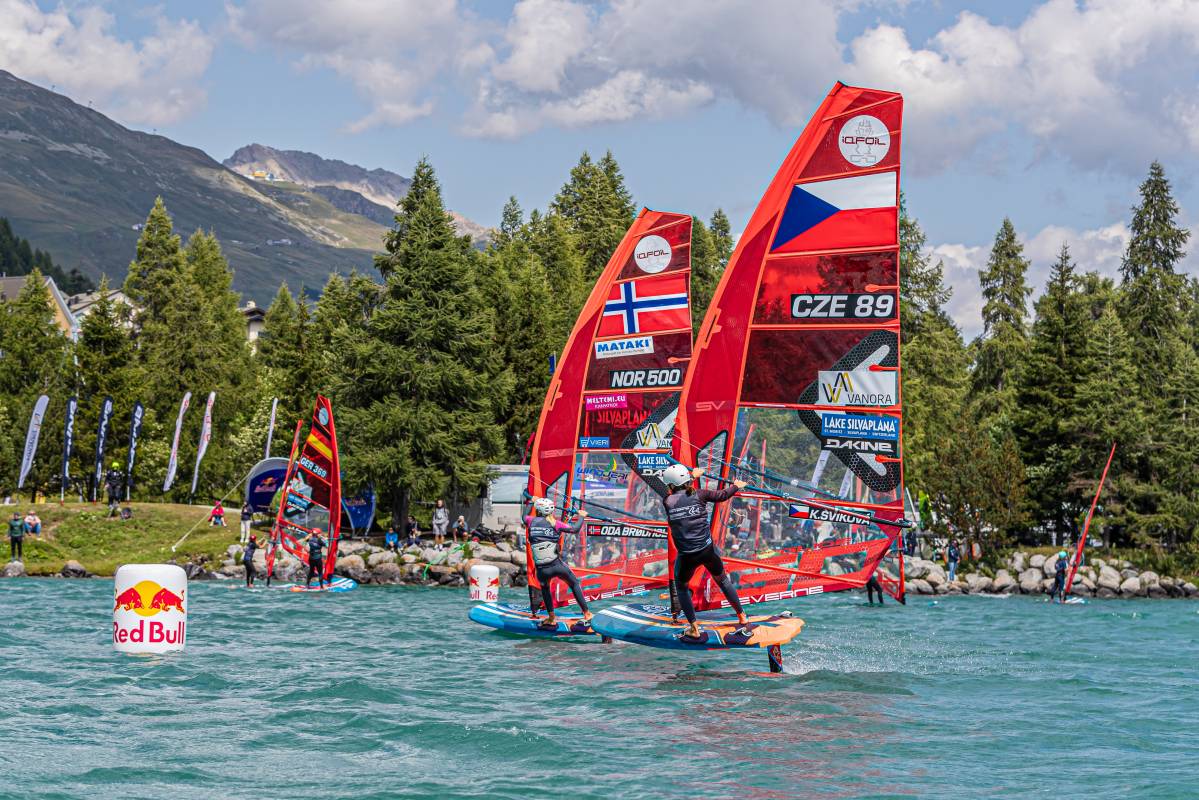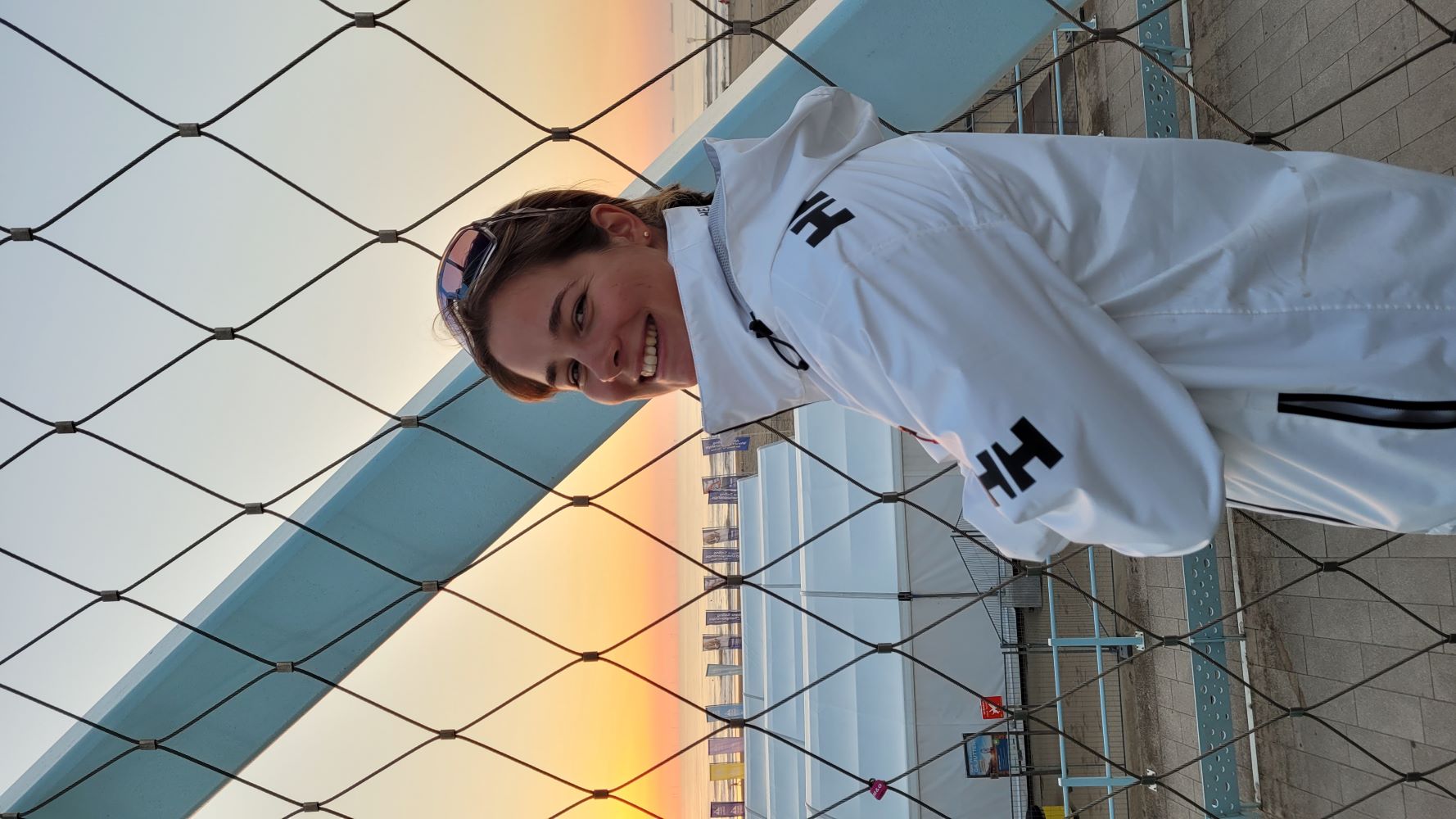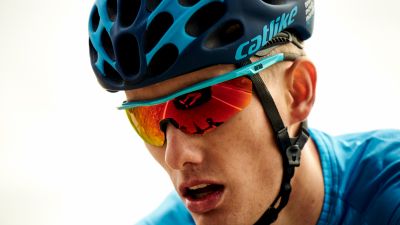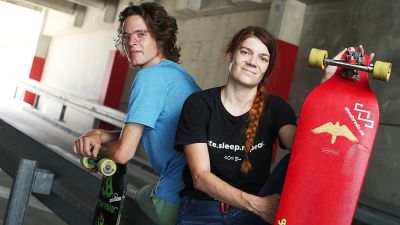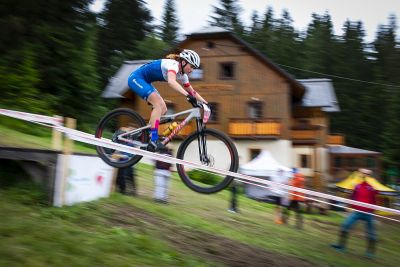It’s no surprise windsurfing is a big sport in coastal countries, but it enjoys considerable popularity in landlocked Czechia. Kateřina Švíková, representing her country at the Olympic Games in Paris, is proof.
Like all kids learning the ropes, the Olympic hopeful started with a small ‘Optimist’ class sailboat, with which children learn all the pitfalls of sailing. These little sailboats last them until they are about 15 years old, then they have to choose their next sailing direction. Katherine first tried the Laser Radial class, but soon windsurfing took over and became her absolute favourite: first in the BIC Techno 293 category and now in the iQFoil class, where windsurfers hit speeds of up to 50 kilometres per hour.
“There's a foil under the board that lifts it up at speed, and it makes the board basically fly over the water. It's definitely a much bigger adrenaline rush. I find it faster, more physically demanding, and that's what I like about it. I like speed,” says the twenty-three-year-old student of the Institute of Economic Studies at the Faculty of Social Sciences of Charles University.
Cádiz and Spanish coach
Karel Lavický, a three-time Olympic Games participant and a well-known figure in Czech windsurfing, helped her a lot in the beginning. “As a coach he made a big difference. Four years ago, I went with him to Cádiz, Spain, for a trial and there I started to enjoy riding the Olympic board,” Kateřina recalls; she has remained loyal to the Andalusian port city ever since. She goes there every year for training camps and has a Spanish coach, Jaime Andrés Castro.
He also works with her younger sister Barbara, who also fell under the spell of windsurfing, and as fate would have it, they both competed for the last place in the final race before the Olympics. “With only one boat from each country allowed to go to the Olympics, we kind of expected that it could be decided between us,” Katherine, who clinched it, says. “My sister and I are a good team: I think we complement each other well and we are good sparring partners. We are comfortable training together and we know what to expect from each other already.”
She had already tried to compete in the Olympics four years ago, back then in the RS:X class, but it was not a goal she was determined to achieve. “I remember a time in the junior classes when very ambitious colleagues were talking about how they would one day go to the Olympics, and I just thought I would give it a go and see. Then I started to take up the sport more professionally, and it just worked out in the end,” Kateřina, who also played tennis and beach volleyball as a child, says.
“But that was more for fun. I enjoyed it, but I didn't think I could get to a higher level and I had to decide what I wanted to do more. And I think I made the right choice," she says. After all, the Czech Republic is among the top 25 countries in the world that is competing in Marseille, where the Olympic sailing events are located. “There are five days of racing and only on the last day is the final, where everything is decided, and then only the top ten go. The main favourites are Israeli, Spanish, British and Polish competitors.”
She knows most of her opponents well, as they meet regularly at competitions and training camps, because windsurfing is not sufficiently trainable in Czechia. During the winter she usually prepares in Spain, and during the summer she spends a lot of time in Italy at Lago di Garda. “I'm away from home for about six months, so a lot of my stuff is permanently abroad.” She travels with plenty if gear, too - hauling rolled-up sails alongside a nearly three-metre board, foils in another pack, and not forgetting a nearly five-metre mast. That’s not including personal luggage!
Windsurfing is not a cheap affair, Kateřina is supported by the Czech Sailing Federation and Victoria VSC, the University Sports Centre of the Ministry of Education, Youth and Sports. “I change my board after about two years, the sail is new for every year. The equipment also wears out because the sun shines on it a lot and that stretches the material and it starts to get softer.” The mold for all racing windsurfers is absolutely the same, made by one or two companies, and they are made of carbon. The sails have to be the same too, so the racers only differ in flags and numbers.
The racer's body gets a workout too, just imagine being constantly in a squat and pumping the sail to go faster. “There are these loops on the board that you stick your feet in and then you hold on to the boom, so it's very hard on your legs. So I also used to have problems with my back because we put a lot of strain on the lower body. That's why I have to compensate for it with some exercise and I go to physiotherapy,” Kateřina Švíková admits.
It's hardly surprising that when she has a bit of free time, she tries to relax. “Even training is quite demanding, so I often sleep during the day when I have time. After the season we usually have three weeks to a month off, and so far it's mostly been in November. And I've been doing school and studying to get everything done,” says Kateřina, who doesn't have an individual study plan at the Faculty of Social Sciences.
“I was a bit lucky in that I started studying during the Covid period, when classes were online. And then I just had to learn to manage it somehow. I always come to school once in a while, study for exams, my friends help me a lot, send me notes. And when I can go to school more, I try to get as many credits as I can so I can go in the summer. I have to plan more.”
At the Institute of Economic Studies at the faculty, she is working on data analysis, so her future after her sports career could lead in that direction. “I've always enjoyed maths, but I didn't want to fully go to the Faculty of Mathematics and Physics, data analysis at IES seemed like such a nice compromise. But I also applied to the Faculty of Science for hydrology, because in our sport we deal a lot with what the wind and waves will be like, our preparation for races is quite often around meteorology.”
Fish jumping into the sail!
It often happens that windsurfers train for two weeks in a given place, but then the weather conditions are completely different from what they have been used to.
“We start upwind and the goal is to go around a predetermined course around the buoys. However, it never blows the same everywhere, so you have to read the wind correctly and find the ideal upwind and downwind route, and get around the course better and faster than your competitors... That's our racing tactics,” she explains.
On the water, they move at high speeds and, thanks to the foil, they float, so the gusts from the waves pass them by, but they can collide with marine animals.
“I've seen flying fish jump into my sail in Lanzarote, I've seen dolphins once, and I've seen seals when racing in the Netherlands. I've also had a couple of large sea turtles keep me company, and that can be dangerous. I'm a bit scared that I might bump into one, because that would kill the turtle and probably shock me as well,” Kateřina Švíková says in conclusion.
| Kateřina Švíková |
| Kateřina Švíková is a studying in the Master's programme at the Institute of Economic Studies at the Faculty of Social Sciences of Charles University. She is a member of the Prague Yacht Club CERE. Since 2018, she has been competing in the RS:X class and attempted to qualify for the Tokyo Olympics. In 2020 she started racing in iQFoil, the new Olympic class for Paris 2024, where she qualified this year. |


